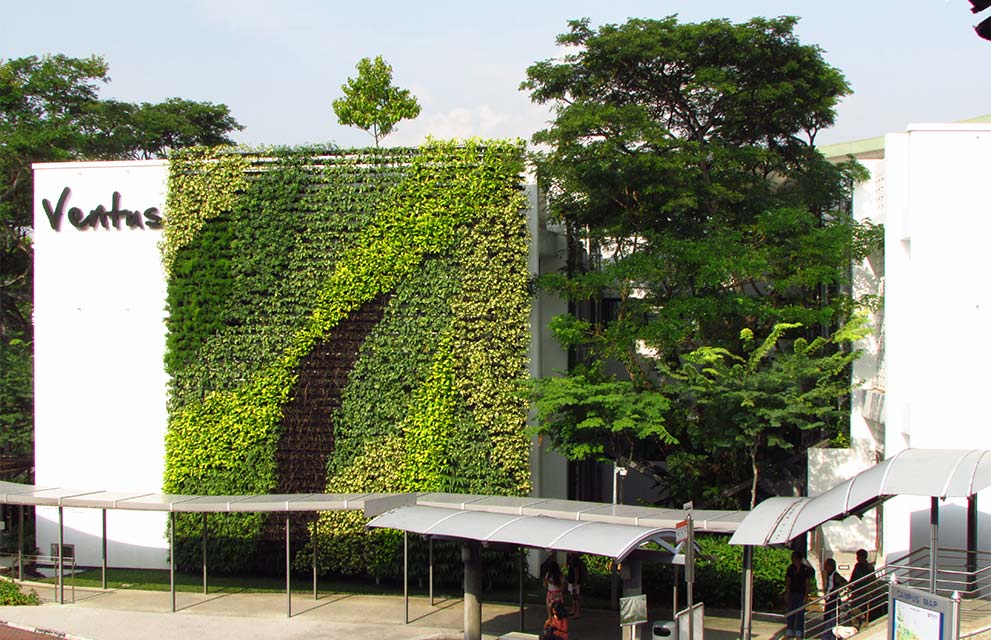Skyrise Greenery in Buildings
Having skyrise greenery aligns with NUS’ vision of creating an environmentally friendly and sustainable campus. These can take the form of green roofs, roof gardens or vertical greenery.
Incorporating green spaces in buildings is one of the strategies adopted by the University to reduce energy consumption, while promoting the growth of natural habitats with a diverse range of flora and fauna and bringing nature closer to its occupants. The green spaces offer thermal insulation, reducing heat drawn into the buildings. As a result, the amount of energy needed to cool the buildings is lowered.
Over the years, sizeable skyrise gardens have been created within the University. To date, more than 45,000 square meters of green spaces within building have been installed in 48 locations across the campus.
In 2017, NUS’ Ventus Building, which boasts a prominent green wall with a diverse planting palette that attracts a wide range of biodiversity, was awarded the National Parks Board’s Skyrise Greenery Excellence Award. It was also certified as an Outstanding Project under the Board’s Landscape Excellence Assessment Framework (LEAF).
With a long term vision of creating a biophilic campus, the University aims to incorporate lush greenery into its building designs wherever possible.

